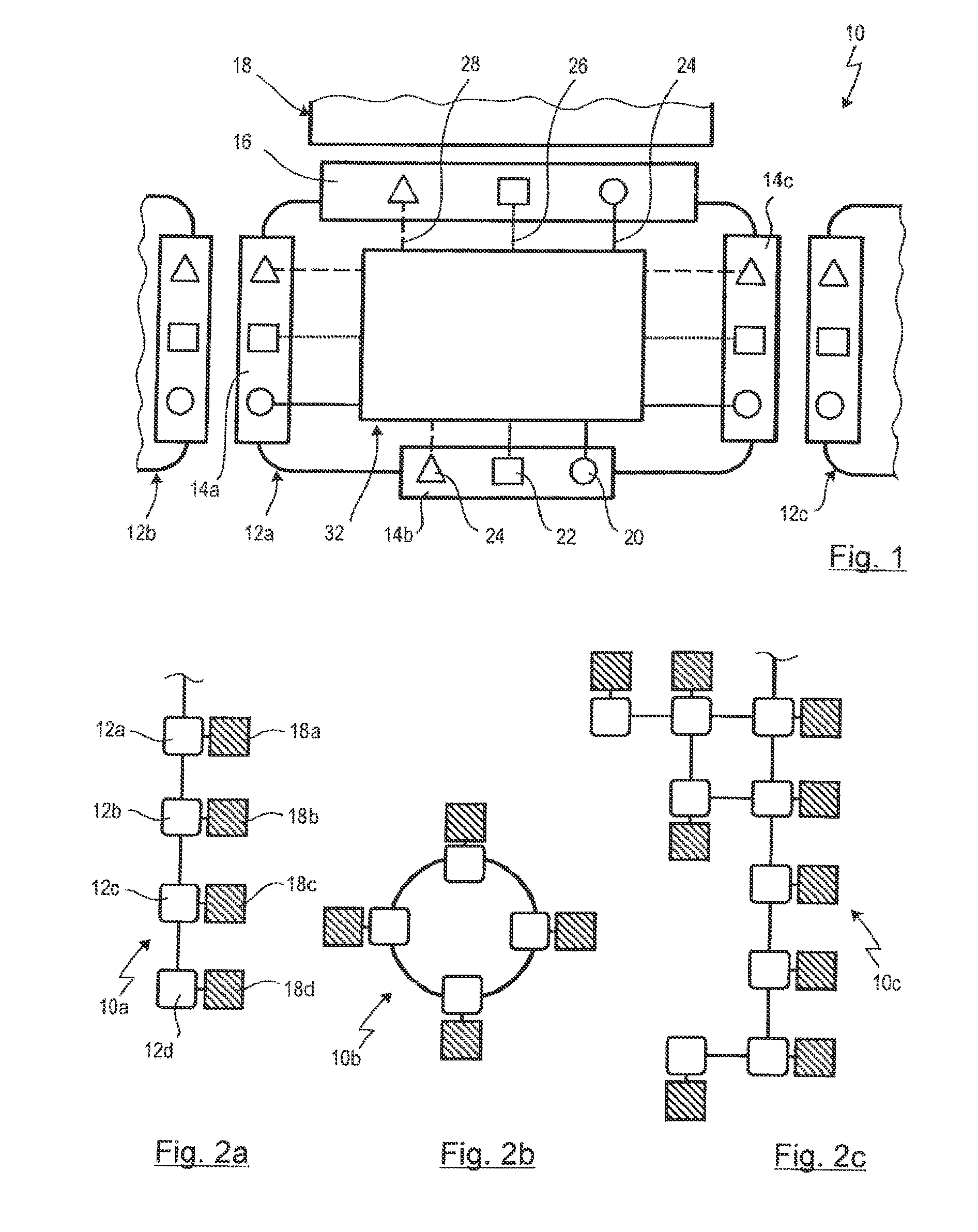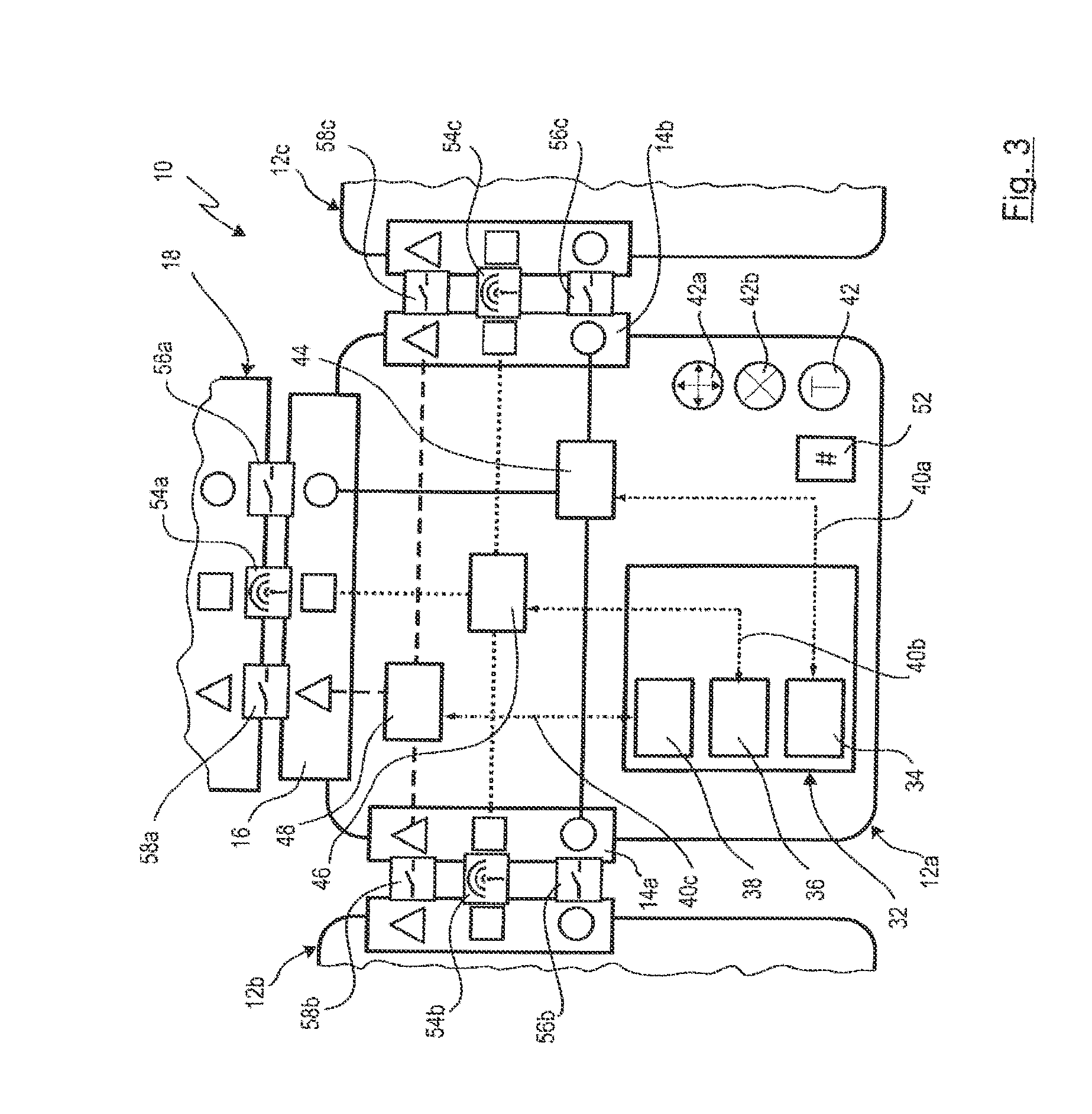Network infrastructure component, network system having a plurality of network infrastructure components, and use of the network system
a network infrastructure and component technology, applied in the direction of battery/fuel cell control arrangement, electric devices, capacitors, etc., can solve the problems of not being able to couple energy consumers or energy stores of different systems to one another, not being able to precisely detect the demand of consumers, and smart grid systems requiring a superordinate central control structur
- Summary
- Abstract
- Description
- Claims
- Application Information
AI Technical Summary
Benefits of technology
Problems solved by technology
Method used
Image
Examples
Embodiment Construction
[0123]FIG. 1 shows a simplified schematic illustration of a network system 10 comprising a coupling of a plurality of network infrastructure components 12. The network infrastructure component 12a is illustrated schematically; network infrastructure components 12b and 12c coupled thereto are depicted in each case only partially as excerpts. The network infrastructure component 12a comprises a plurality of contact units 14a, 14b, 14c. Each of the contact units 14a, 14b, 14c is designed to couple the network infrastructure component 12a to a further network infrastructure component 12. The coupling can be effected directly by means of plug connectors, for instance. It is likewise conceivable to provide line connectors or the like, particularly if spatial distances are to be overcome when linking a plurality of network infrastructure components 12. It is particularly advantageous if lines, cables or the like are “known” in the network system 10, for instance in order to acquire knowled...
PUM
 Login to View More
Login to View More Abstract
Description
Claims
Application Information
 Login to View More
Login to View More - R&D
- Intellectual Property
- Life Sciences
- Materials
- Tech Scout
- Unparalleled Data Quality
- Higher Quality Content
- 60% Fewer Hallucinations
Browse by: Latest US Patents, China's latest patents, Technical Efficacy Thesaurus, Application Domain, Technology Topic, Popular Technical Reports.
© 2025 PatSnap. All rights reserved.Legal|Privacy policy|Modern Slavery Act Transparency Statement|Sitemap|About US| Contact US: help@patsnap.com



